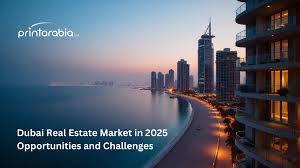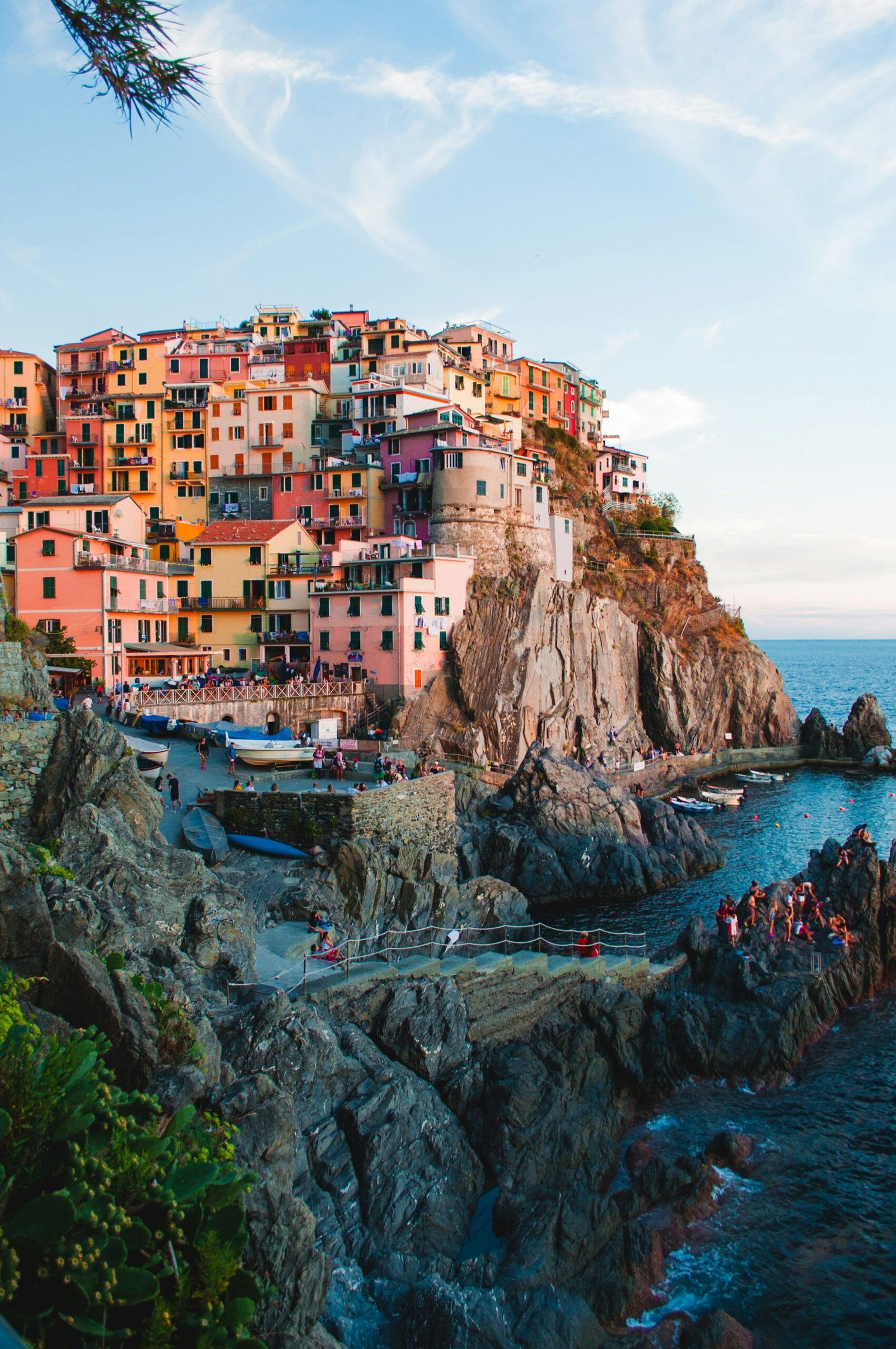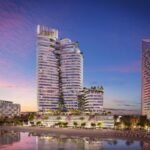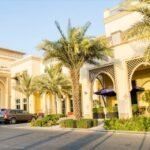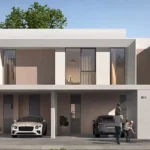Now Reading: Luxury Villas in Dubai: Meeting the Soaring Demand in 2025
-
01
Luxury Villas in Dubai: Meeting the Soaring Demand in 2025
Luxury Villas in Dubai: Meeting the Soaring Demand in 2025

Table of Contents
Dubai’s luxury villa market in 2025 is experiencing unprecedented demand, driven by high-net-worth individuals (HNWIs), expatriates, and foreign investors seeking exclusivity, lifestyle amenities, and strong returns. With a projected 6–9% price growth, 5–7% rental yields, and AED 760.7 billion in transactions (2024), the emirate’s luxury segment is bolstered by infrastructure projects, tax-free returns, and Golden Visa incentives. Building on insights from Dubai’s emerging neighborhoods, Sharjah’s freehold zones, and Ajman’s affordable housing, this response explores how Dubai meets the soaring demand for luxury villas in 2025, detailing key areas, projects, investor opportunities, and comparisons to regional trends.
Key Drivers of Luxury Villa Demand in Dubai (2025)

- HNWI and Expatriate Influx:
- Context: Dubai hosts 72,500 HNWIs (2024, +14% year-over-year), with 4,500 new millionaires relocating in 2025, per Henley & Partners. Expatriates (88% of population) seek premium residences, per Role of Foreign Investment.
- Impact: Demand for luxury villas in Palm Jumeirah (AED 15–50 million, 5–7% ROI) and Emirates Hills (AED 20–100 million, 4–6% ROI) surged, with 35% growth in ultra-luxury transactions (AED 10 million+), per Knight Frank.
- Why It Fuels Demand: Wealth migration and lifestyle appeal drive purchases, akin to Abu Dhabi’s Saadiyat Island (AED 8.98 million, 6.82% ROI).
- Golden Visa and Investor-Friendly Policies:
- Context: Properties worth AED 2 million+ qualify for a 10-year Golden Visa, expanded in 2024 to include entrepreneurs, per Sharjah’s Freehold Zones. No income tax, capital gains tax, or repatriation restrictions.
- Impact: Attracts FDI (AED 114 billion, H1 2024), with Russians, Indians, and Europeans buying villas in Dubai Hills Estate and Mohammed Bin Rashid City (MBR City), per Role of Foreign Investment.
- Why It Fuels Demand: Long-term residency and tax-free returns incentivize HNWIs, similar to Sharjah’s 140% FDI surge.
- Infrastructure and Connectivity:
- Context: Projects like Etihad Rail, Al Maktoum Airport expansion, and Dubai Metro Blue Line enhance access to luxury areas, per Top 10 Emerging Neighborhoods in Dubai.
- Impact: Boosts villa values in Damac Lagoons (AED 2–7 million, 5–6% ROI) and Tilal Al Ghaf (AED 3–10 million, 5–7% ROI) by 10–15%, mirroring Sharjah’s metro-driven growth.
- Why It Fuels Demand: Seamless connectivity appeals to global buyers, supporting off-plan sales (23.4% growth, 2024).
- Luxury Lifestyle and Amenities:
- Context: Villas offer private pools, smart home systems, golf courses, and waterfront views, aligning with Dubai’s status as a global luxury hub, per.
- Impact: Areas like Palm Jumeirah and Dubai Hills Estate command premiums (20–30% above city average), with short-term rental yields up to 8%, per.
- Why It Fuels Demand: Exclusivity and resort-style living attract affluent buyers, akin to Abu Dhabi’s Yas Island.
- Sustainability and Smart Technology:
- Context: Eco-friendly villas with solar panels, IoT systems, and LEED certification align with UAE Net Zero 2050, per Sustainable Living Developments.
- Impact: Projects in Tilal Al Ghaf and Damac Gardens offer 20–25% utility cost savings, boosting demand, similar to Sharjah’s Sharjah Sustainable City.
- Why It Fuels Demand: Appeals to eco-conscious HNWIs, enhancing ROI and resale value.
Top Luxury Villa Areas and Developments in 2025

- Palm Jumeirah:
- Details: Iconic man-made island with beachfront villas (AED 15–400 million, 5–7% ROI), private beaches, and ultra-luxury amenities, per.
- Key Projects: XXII Carat (AED 25–60 million) offers seven-bedroom mansions; Atlantis The Royal Residences (AED 20–100 million) feature branded villas.
- Investment Appeal: 7–9% price growth, 8% short-term rental yields, and Golden Visa eligibility. High demand from Russian and European HNWIs, per Role of Foreign Investment.
- Comparison: Outpaces Abu Dhabi’s Saadiyat Island in prestige but shares luxury appeal.
- Dubai Hills Estate:
- Details: Emaar’s golf-course community with villas (AED 5–20 million, 5–6% ROI), parks, and Dubai Hills Mall, per.
- Key Projects: Golf Grove (AED 5–10 million) and Emerald Hills (AED 10–20 million) offer modern designs.
- Investment Appeal: 6–8% price growth, family-friendly environment, and 5–7% yields, similar to Sharjah’s Al Zahia (6–7% ROI).
- Comparison: More affordable than Palm Jumeirah, akin to Ajman’s Al Rashidiya family focus.
- Emirates Hills:
- Details: Dubai’s “Beverly Hills” with ultra-luxury villas (AED 20–100 million, 4–6% ROI) around Montgomerie Golf Course, per.
- Key Projects: Custom-built mansions with private pools and smart systems.
- Investment Appeal: 6–7% price growth, exclusivity, and HNWI demand, comparable to Abu Dhabi’s Yas Island (6.50% ROI).
- Comparison: Premium pricing but lower yields than emerging areas like Damac Lagoons.
- Tilal Al Ghaf:
- Details: Majid Al Futtaim’s sustainable community with villas (AED 3–10 million, 5–7% ROI), a central lagoon, and eco-friendly features, per Top 10 Emerging Neighborhoods.
- Key Projects: Harmony (AED 3–7 million) and Serenity Mansions (AED 7–10 million) offer green living.
- Investment Appeal: 6–8% price growth, 20% utility savings, and family appeal, mirroring Sharjah’s Sharjah Sustainable City.
- Comparison: Affordable luxury, similar to Ajman’s Al Ameera Village sustainability focus.
- Damac Lagoons:
- Details: Resort-style community with Mediterranean-themed villas (AED 2–7 million, 5–6% ROI), water features, and lifestyle amenities, per.
- Key Projects: Portofino (AED 2–4 million) and Malta (AED 4–7 million) offer four-bedroom villas.
- Investment Appeal: 6–8% price growth, 5–7% yields, and tourist-driven rentals, akin to Sharjah’s Maryam Island.
- Comparison: Competitive pricing compared to Palm Jumeirah, with strong off-plan demand.
- Mohammed Bin Rashid City (MBR City):
- Details: Mixed-use hub with villas (AED 2–15 million, 5–6% ROI), near Meydan One Mall and Dubai Canal, per.
- Key Projects: Sobha Hartland (AED 4–10 million) and District One Villas (AED 5–15 million) feature waterfront designs.
- Investment Appeal: 7–9% price growth, Golden Visa eligibility, and central location, similar to Abu Dhabi’s Al Reem Island.
- Comparison: Balances luxury and accessibility, unlike Ajman’s budget focus.
Strategies to Meet Demand
- Off-Plan Developments:
- Approach: Flexible payment plans (10% down, 60-month installments) in Damac Lagoons and Tilal Al Ghaf, with 36% of properties selling above asking price, per.
- Impact: Attracts investors with phased payments, boosting sales (23.4% off-plan growth, 2024), akin to Ajman’s Al Ameera Village plans.
- Example: Sobha Hartland offers off-plan villas with 5-year post-handover plans.
- Branded and Ultra-Luxury Villas:
- Approach: Partnerships with brands like Bugatti (Bugatti Residences, AED 19–75 million) and Versace (Damac Hills) cater to ultra-HNWIs, per.
- Impact: Commands premiums (20–30% above market), meeting exclusivity demand, similar to Abu Dhabi’s Mamsha Al Saadiyat.
- Example: Atlantis The Royal Residences targets billionaires with bespoke designs.
- Sustainable Luxury:
- Approach: Villas in Tilal Al Ghaf and Damac Gardens use solar panels, smart systems, and LEED certification, saving 20–25% on utilities, per Sustainable Living Developments.
- Impact: Appeals to eco-conscious buyers, boosting resale value, mirroring Sharjah’s Sharjah Sustainable City.
- Example: Harmony villas integrate AI-driven energy management.
- Short-Term Rental Market:
- Approach: Platforms like Airbnb drive 8–10% yields in Palm Jumeirah and Damac Lagoons, supported by 20.5 million tourists (2024), per.
- Impact: Meets demand for vacation homes, similar to Sharjah’s Al Mamzar (8–10% yields).
- Example: Portofino villas yield AED 200,000 annually from short-term rentals.
Opportunities for Investors
- Ultra-Luxury Investments:
- Areas: Palm Jumeirah, Emirates Hills.
- Why Invest: 5–7% yields, 7–9% price growth, and billionaire appeal, per.
- Action: Buy branded villas in XXII Carat via Emaar, using Bayut.
- Emerging Luxury Markets:
- Areas: Damac Lagoons, Tilal Al Ghaf.
- Why Invest: 5–7% yields, 6–8% growth, and affordability (30–50% below Palm Jumeirah), per Top 10 Emerging Neighborhoods.
- Action: Target off-plan in Portofino via Damac, leveraging dubizzle.
- Sustainable Villas:
- Areas: Tilal Al Ghaf, MBR City.
- Why Invest: 20–25% cost savings, R&D tax credits (30–50%, 2026), and eco-demand, per Sustainable Living Developments.
- Action: Invest in Harmony via Majid Al Futtaim, using PHOREE Real Estate.
- Short-Term Rentals:
- Areas: Palm Jumeirah, Damac Lagoons.
- Why Invest: 8–10% yields from tourism, per.
- Action: Purchase villas in Atlantis The Royal Residences for Airbnb, via Emaar.
Challenges and Considerations
- High Entry Costs: Palm Jumeirah villas (AED 15 million+) limit accessibility, unlike Ajman’s AED 300,000 apartments, per Affordable Housing in Ajman.
- Market Saturation: Oversupply in MBR City could soften yields, per.
- Tax Compliance: 9% corporate tax and eInvoicing require registration by March 31, 2025 (AED 10,000 penalty), per Sharjah’s Freehold Zones.
- Global Risks: Geopolitical tensions may affect HNWI inflows, though Dubai’s 4.5% GDP growth mitigates risks, per.
Recommendations
- Investment Focus: Prioritize off-plan villas in Damac Lagoons or Tilal Al Ghaf for 5–7% ROI. Target ultra-luxury in Palm Jumeirah for Golden Visa and prestige.
- Due Diligence: Verify developers via Dubai Land Department (www.dubailand.gov.ae) and RERA.
- PropTech: Use Bayut, dubizzle, and PHOREE Real Estate for insights, per Top 10 Emerging Neighborhoods.
- Tax Planning: Register via EmaraTax (www.tax.gov.ae); claim R&D credits, consulting PwC Middle East.
- Monitor Trends: Track HNWI migration and tourism via Dubai Economy and Tourism (www.dubaitourism.gov.ae) and Emirates 24/7.
Key Drivers
- HNWIs: 72,500 HNWIs (+14%, 2024), 4,500 new millionaires (2025). 35% ultra-luxury transaction growth.
- Golden Visa: AED 2M+ for 10-year visa, FDI AED 114B (H1 2024).
- Infrastructure: Etihad Rail, Metro Blue Line boost values 10–15%.
- Lifestyle: Private pools, golf courses, 8–10% short-term rental yields.
- Sustainability: 20–25% utility savings, LEED-certified villas.
Top Areas/Projects
- Palm Jumeirah: Villas (AED 15–400M, 5–7% ROI). XXII Carat, Atlantis The Royal Residences. 7–9% growth.
- Dubai Hills Estate: Villas (AED 5–20M, 5–6% ROI). Golf Grove, Emerald Hills. 6–8% growth.
- Emirates Hills: Villas (AED 20–100M, 4–6% ROI). Custom mansions. 6–7% growth.
- Tilal Al Ghaf: Villas (AED 3–10M, 5–7% ROI). Harmony, Serenity Mansions. 6–8% growth.
- Damac Lagoons: Villas (AED 2–7M, 5–6% ROI). Portofino, Malta. 6–8% growth.
- MBR City: Villas (AED 2–15M, 5–6% ROI). Sobha Hartland, District One. 7–9% growth.
Strategies
- Off-Plan: 10% down, 60-month plans in Damac Lagoons, Tilal Al Ghaf (23.4% sales growth).
- Branded Villas: Bugatti Residences, Versace villas command 20–30% premiums.
- Sustainable: Tilal Al Ghaf, Damac Gardens save 20–25% utilities.
- Rentals: 8–10% yields in Palm Jumeirah, Damac Lagoons via Airbnb.
Opportunities
- Ultra-Luxury: Palm Jumeirah, Emirates Hills (5–7% yields, 7–9% growth).
- Emerging Luxury: Damac Lagoons, Tilal Al Ghaf (5–7% yields, 6–8% growth).
- Sustainable: Tilal Al Ghaf, MBR City (20–25% savings, R&D credits).
- Rentals: Palm Jumeirah, Damac Lagoons (8–10% yields).
Challenges
- Costs: Palm Jumeirah villas AED 15M+ vs. Ajman’s AED 300,000.
- Saturation: Oversupply risks in MBR City.
- Tax: 9% corporate tax, eInvoicing by March 31, 2025 (AED 10,000 penalty).
- Risks: Geopolitical tensions, mitigated by 4.5% GDP growth.
Conclusion
Dubai’s luxury villa market in 2025 meets soaring demand through iconic areas like Palm Jumeirah, emerging hubs like Damac Lagoons, and sustainable communities like Tilal Al Ghaf, offering 5–7% ROI and 6–9% price growth. Compared to Sharjah’s 6–9% yields or Ajman’s 9–11.71%, Dubai’s prestige and infrastructure set it apart. Investors should target off-plan and branded villas via Emaar or Damac, leverage Bayut, and ensure tax compliance by March 31, 2025, to capitalize on this dynamic segment.
WATCH MORE: https://www.instagram.com/reel/DA7_1iHoitA/?locale=zh_tw&hl=ar
READ MORE: Dubai’s Real Estate Boom: Opportunities and Challenges in 2025



